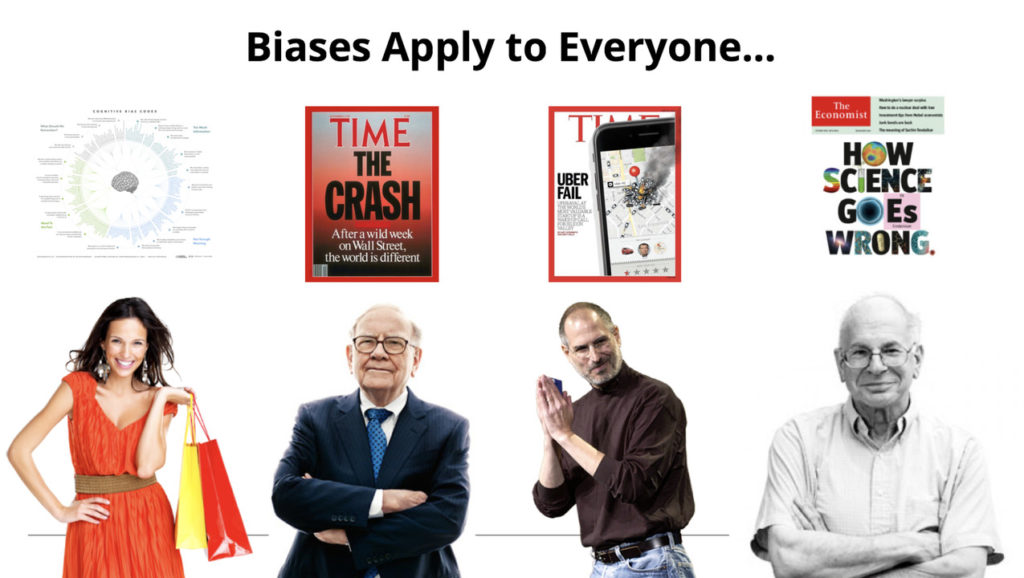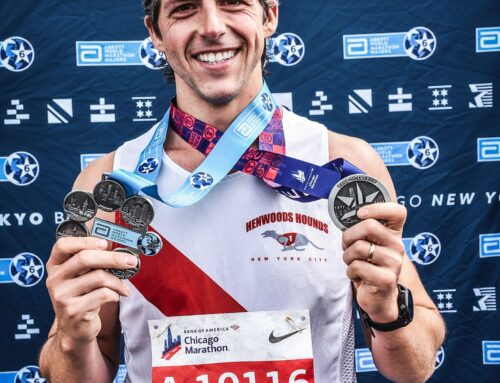During a high school football game I sustained an injury to my knee. In consulting my options I spoke with 4 ‘experts’ each who offered very different solutions:
- Chiropractor recommended I get adjustments.
- Physical therapist said therapy could fix the muscle imbalances.
- Orthopedic surgeon (30-year veteran) said brace it and rest.
- Orthopedic surgeon (younger) said surgery was needed.
The point is solutions are governed by paradigms, world views, and beliefs systems which make them predictable and not insightful.

PARADIGMS GOVERN HOW YOU CONDUCT RESEARCH.
A paradigm is like the lens of camera. No camera can produce a picture without a lens, like no viewpoint can be produced without a paradigm. Paradigms are a pervasive framework for which how people see and interpret the world (Kuhn, 1974). Our paradigms are shaped over time: values taught by our parents, learning from school (investors see stock price and PE ratios; marketers see brand equity), and life experiences (P&G employees see “who, what, and how”, whereas start-up’s see “survive at all costs”). It gets deeper than that, a Booth MBA vs. Wharton MBA will differently shape your view of the markets (see Howard Marks talk).
Our Paradigms, World-views & Belief Systems Govern…
- The questions that are asked.
- How those questions are investigated.
- How those results are interpreted.

PARADIGMS PREDICT THE INSIGHTS (Which make them NOT insightful)
Daniel Kahneman (2011) coined the phrase “What you see is all there is” (WYSIATI) to illustrate that we form impressions and judgments based on the information that is available to us. For example, we quickly form impressions of people just by looking at them. I propose amending Kahneman’s statement to “What you BELIEVE is all you see” (WYBIAYS). This means whatever your paradigm or mental worldview is it will shape what you see (Bruner & Postman, 1949). If you believe in sustainability you may start seeing hybrid cars and energy saving opportunities everywhere. Beliefs increase the accessibility and availability of products, brands, and people that fit the paradigm. If things don’t fit our beliefs – we ignore them. In short, insights are predictable based on your paradigms which we operate in.
- Creatives believe in imagination and see the world in stories.
- Scientists believe in science and see the world in cause and effect.
THE ANSWERS ARE NOT IN YOUR BRAIN!
Discovering insights is like solving a 3,000 piece jigsaw puzzle. The approach we take to solve the puzzle is our paradigm. Do we start with the edges, the middle, or maybe identify similar colored puzzle pieces? These puzzle approaches represent different insight methods (e.g., quantitative, qualitative). Every puzzle solving approach relies on the puzzle box as a guide to uncover the insights. But what if there was no box?
Every puzzle solving approach relies on the puzzle box as a guide to uncover the insights. But what if there was no box?

If you are connecting the dots here – the insights we are looking for are already expected, predetermined and can be predicted. Scientists confirm their hypotheses and creatives confirm their imaginations.
NEW PEOPLE = NEW PARADIGMS = NEW PERSPECTIVES
People create the paradigms. People also cause the problem. The paradox behind the stagnation of insights and innovation is people want people who conform to their worldview. We simply crave similarity – people that share the same beliefs, sip the same kool-aid, etc. Unless structural processes are put in place its hard to break the bias of similarity. Research shows, and smart companies realize, diversity in paradigms is king for providing new perspectives, generating novel ideas, and stimulating creativity (See Leung et al., 2008 & Mueller et al., 2012).
FORCE YOURSELF INTO DIFFERENT PARADIGM & PERSPECTIVES.
The goal is to ask new, different, and better questions. To do this one needs to challenge themselves…
- Attend a Conference in a Different Industry. I could attend marketing science and psychology conferences all day but many of my best ideas and product discoveries have come from attending investment finance and venture capital conferences. They provided different lens to analyze my work.
- Eat Lunch with Different People Daily. Find people that have completely different beliefs, work, and are in different life-stages and invite them to lunch. By understanding and appreciating different can afford new lens on the world.
- Hire Diversified Talent. If you are science focused, hire art. If you are business minded, hire an engineer. If you are an entrepreneur, hire a skeptic. If you are process oriented, hire execution. Trading off talents and challenging each other is an opportunity for personal and professional growth.
- Travel to New Country. Assimilate into a new country, culture and language. Some lady I met wanted to learn German – she moved there.
Achieving new insights requires a commitment to non-conformity.






